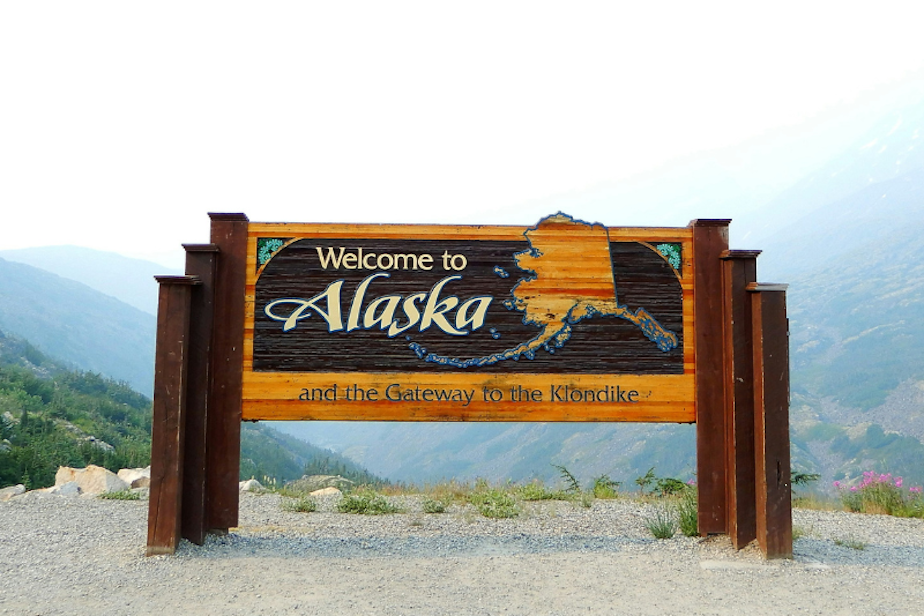Do basic income programs cause people to work less? Ask Alaska

When terms like "universal basic income" or "guaranteed basic income" are mentioned, folks generally raise an eyebrow, either out of curiosity or out of criticism.
In either case, Alaska could be looked to for answers about such programs' efficacy. That state has been sending annual checks to its residents for more than 40 years as a form of basic income. But the big picture is more nuanced, according to researcher Brett Watson.
RELATED: Can $500 a month make a dent in Seattle-area poverty?
"What does it mean for an income to be ‘basic,’ meet people’s basic needs?" Watson asked KUOW's Soundside. "Sometimes the dividend amount is pretty significant. In 2022, the dividend amount was almost $10,000 for a typical family in [Alaska]. But in other years, it’s smaller than that, and we wouldn’t think of an amount like $5,000 per family, per year, as being enough to cover a family’s basic needs. So, it might fall short of that definition of basic.”
Still, Alaska's Public Fund Dividend program has had an effect on the state.
Sponsored
Since the early 1980s, Alaska has sent checks to residents every October, generally for around $1,000 or $2,000. In 2020, they were for more than $3,000. A typical household could get up to $10,000.
The fund is based on the state's oil revenues. If the state gets more oil revenue one year, residents get more money in October. Less revenue, they get less. To get this check, a person has to have been an Alaska resident for one calendar year.
Watson has been studying Alaska's Public Dividend Fund for a few years. He's an associate professor of applied and natural resource economics at the University of Alaska Anchorage, and also works with the Institute of Social and Economic Research.
"People very much perceive this as regular sources of their own income and feel a lot of freedom to spend the money however they see fit," he said.
"Around the time the dividend gets paid out, in October, you see a lot of sale signs going up around town and you see a few more people crowded in some bars in town," he added. "There’s no stigma attached with that. People see this as their own money to do with as they see fit. There is very little judgement placed on neighbors for buying a snow machine or taking that family vacation to Hawaii.”
Sponsored
Watson noted that data spanning many years indicates that children's health can be influenced by the annual checks — families with larger dividends generally have healthier outcomes than those with smaller. He also said that some residents do end up spending money on "temptation goods," like drugs and alcohol, but "these effects are actually pretty small."
In 2022, Washington state lawmakers proposed an income program, similar to Alaska's. It was not, ultimately, passed by the Legislature.
RELATED: Tacoma approaches affordable housing from a new angle: anti-displacement
Elsewhere in Washington, the conversation has continued through experiments at a city level. Tacoma's GRIT program gave $500 per month to a group of residents in 2021, then monitored if it helped them or not. More recently, a pilot program in King County did the exact same thing. In such experiments, one outcome has been counterintuitive to critics of basic income programs: people generally worked more.
That echoes assessments of Alaska's basic income program; however, Watson noted that this effect is more nuanced, and it's not really about working less or more. For example, one person may be inclined not to work as much, but at the same time, the money prompts an economic stimulus. Stores then have to hire more people to handle all the customers.
Sponsored
"For men, we actually see an increase in their workforce participation rate," Watson said of Alaska's program. "They are being hired to support this influx of customers that businesses are seeing."
"For women, and particularly mothers, and particularly mothers of younger children, we see them scale back their participation in the labor force – not a lot, but a little bit," he went on. "But when we think about our concerns over the social, potential ills of this cash, I think that mothers making additional investments in their younger children might be not particularly concerning from a social perspective, and in fact, it might be an additional benefit.”
To hear more of Brett Watson's insights, listen to Soundside's segment on basic income by clicking the audio at the top of this page.
KUOW's Dyer Oxley contributed to this article.





